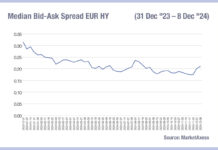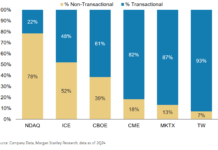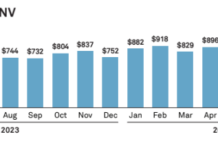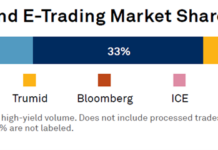ICE’s rules-based, transaction-driven approach provides a transparent representation of municipal market movement.
By Patrick Smith, Senior Director, Head of Municipal Evaluations, ICE
The complex and fragmented municipal bond market – comprised of around one million securities and 50,000-plus issuers – has long been a challenge to price. Data can be scarce, dated, and not standardized. ICE has been working to address this challenge over the past few years, drawing on our expertise in evaluations and depth of our pricing data. Today, our expanded range of Municipal Coupon & Callability Curves cover four ratings buckets (AAA, AA, A, BBB) three coupon rates (3%, 4%, 5%) and nine call structures (from 10 to 2 years to first call). The curves are mid yield, yield to worst (YTW) curves, with a methodology that is rules-based, transaction-driven, and updates based on certain round lot trades reported to the MSRB’s Real-time Transaction Reporting System (RTRS).
To appreciate what distinguishes our methodology, it’s important to understand how municipal bonds are priced for trading in the secondary market, where a market participant typically refers to recent trades for the price paid in conjunction with other factors such as the size of the trade and spread to the municipal bond (or “muni”) reference curve. The typical muni reference curve is a AAA 5% coupon with a 10-year par call which has traditionally been the most common new issuance borrowing structure of municipalities. If no recent trades are available or market conditions have changed so the last trade price is no longer relevant, other sources are consulted – such as trades involving bonds with similar characteristics. That’s where yield curves have a part to play in collating market color. Many participants are turning to ICE’s AAA Municipal Yield Curve as the key reference curve in both primary and secondary markets due to its rules-based, transaction-driven framework. This provides a more transparent representation of municipal market movement than traditional methods of curve construction, which typically use a consensus approach.
Following the launch of ICE’s AAA Municipal Yield Curve, its live pricing could be applied to as much as 80% of the one million active municipal bond securities universe. Yet ICE’s municipal bond team recognised its limitations: not every bond has a 5% ten-year par call structure throughout its life. Using the AAA curve as a base, they built lower-level coupon and call curves from observed trades that met certain criteria. As criteria-acceptable trades are applied to the model, the curves are updated to reflect changes in current market conditions. This means the impact of any curve movements can be applied to a large swathe of bonds quickly- a more effective way to pass through market color to a larger set of comparable bonds. A survey-based approach would struggle to reflect market conditions in this manner.
The spreads from ICE’s expanded curve set can update several times a day – but no less frequently than daily – and ICE’s team aims to track and reflect the institutional mid yield of each maturity point of the curves. Trades fitting the selection criteria are each associated with a curve and its interpolated tenor yield. Several checks are included to maintain curve consistency across rating, coupon, call and curve shape, while a proprietary optimizer solves for the best suite of curves that minimizes total trade to curve spread differences. The curves are fitted through the middle of the selected trades for a particular curve, so each curve represents the average, or mean credit. ICE’s evaluators are also on hand to provide oversight on curve behavior. Importantly, these curves are used daily to apply intraday and end-of-day market moves to most of the investment grade municipal bond universe evaluated by ICE. Intraday updates to the curves support ICE’s Continuous Evaluated Pricing™ while the end-of-day curves are used to support ICE end-of-day municipal evaluation.
The development of ICE’s expanded municipal curve offering was well underway when the most recent rate hike cycle began in March 2022. These rate hikes – unprecedented in their pace and magnitude – contributed to a market sell-off amid fears of a potential recession. This saw a growing number of outstanding municipal bonds fall into de minimis territory, with ICE estimating a third of tax-exempt munis were affected at the height of the sell-off. In addition, December 2022 saw the ICE Municipal AAA yield curve invert for the first time in history; a dynamic that persists with the two-to-10-year segment of the municipal yield curve. These factors – a drastic rate hike cycle, muni yield curve inversion, and thousands of bonds breaching de minimis – upended recent pricing relationships, underscoring the need for a broader set of municipal bond curves for use in evaluated pricing. These curves can be a valuable input for firms looking to partially or fully automate their trading on municipal securities. While ICE’s evaluations take in and apply more market data than just the curves, the curve suite is now one of the main drivers of evaluation movement.

This article was first published in July 2024 on www.ice.com






















